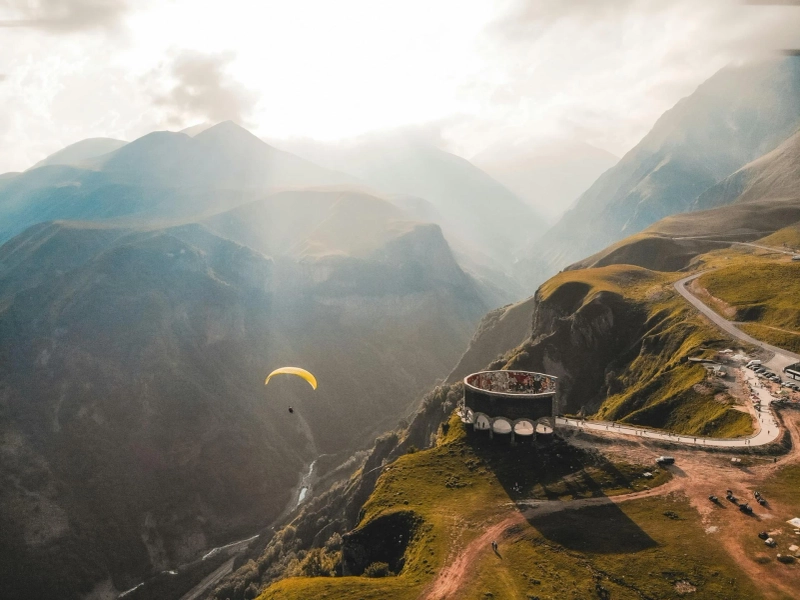Georgia—the country, not the U.S. state—is one of the most underrated gems in Eurasia. Nestled between the towering Caucasus Mountains and the shores of the Black Sea, this land boasts ancient monasteries, vibrant street art, surreal landscapes, and some of the world’s most hospitable people. Yet, much of what makes Georgia truly magical never gets mentioned in standard travel guides.
While most Georgia tour packages focus on Tbilisi, Kazbegi, and a few wine regions, the real soul of the country lies in the moments you don’t plan—the mountain road detours, impromptu supra (feasts), or chance meetings with shepherds in the highlands. This article explores a side of Georgia that goes beyond the typical brochures.
Before diving into the lesser-known experiences, it’s essential to understand that Georgia’s beauty lies not just in its landmarks, but in its layers—cultural, historical, and emotional. The warmth of the people and the untamed nature combine to create a destination that feels both ancient and endlessly alive.
Among the many places to visit in Georgia, some of the most enriching are those that aren’t on the average tourist map. These include forgotten Soviet-era towns, sleepy mountain hamlets, and local-owned wine cellars in villages you won’t find in top search results. They may not come with photo ops built in, but they’ll give you stories that last far beyond the trip.
1. The Villages of Svaneti: Timelessness in the Mountains
The Svaneti region, high in the Caucasus, feels like a separate world. Here, ancient watchtowers stand like stone sentinels guarding the past, and snow-capped peaks tower over tiny hamlets. Mestia, the regional hub, is often the only stop mentioned in travel blogs, but it’s the smaller villages like Ushguli and Adishi that offer a deeper connection to the land and its people.
Electricity might be patchy, and there’s a good chance you’ll end up sharing bread and cheese with a local grandmother, but that’s the magic. Life in these villages moves slowly and meaningfully, rooted in centuries-old traditions that still endure.
2. Tbilisi’s Backstreets and Courtyards
Most visitors breeze through Tbilisi’s Old Town, snapping photos of balconies and bridges. But the real charm of Georgia’s capital lies in the backstreets and hidden courtyards. Behind the Art Nouveau facades are labyrinthine alleyways where grapevines dangle over communal spaces and artists quietly craft masterpieces in basements.
Explore neighborhoods like Sololaki and Avlabari on foot. Talk to locals, step into second-hand bookstores, or take an old wooden staircase just to see what’s at the top. Every turn in Tbilisi has a secret, waiting patiently for someone curious enough to find it.
3. The Forgotten Charm of Chiatura
Chiatura, once a booming mining town during the Soviet era, is now a rusting time capsule full of character. Known for its gravity-defying cable cars—many of which still operate despite their age—it offers a haunting look into Georgia’s industrial past.
Tour guides rarely include Chiatura in their itineraries, but those who do visit are rewarded with a fascinating blend of eerie beauty and unfiltered realism. This is not the polished Georgia seen in tourism ads; it's raw, quiet, and deeply intriguing.
4. Food Experiences That Aren’t in Restaurants
Yes, khinkali and khachapuri are incredible—but the most memorable Georgian meals rarely happen in restaurants. In the countryside, you’ll often be invited into a stranger’s home where the table overflows with homegrown vegetables, aged cheese, and homemade wine.
Learning to make your own khinkali, picking fresh herbs with locals, or attending a spontaneous feast in someone’s backyard will show you the true spirit of Georgian hospitality. These moments can’t be scheduled, but they’re the ones that stay with you.
5. Wine Country Beyond Kakheti
Kakheti is Georgia’s most well-known wine region, but it's not the only one. Racha, Imereti, and even the areas around Tbilisi offer lesser-known but equally remarkable wine experiences. Many family-run wineries use traditional qvevri (clay jars buried underground) to ferment their wines, a method that dates back over 8,000 years.
Skip the commercial wine tours and ask locals about smaller, family-owned cellars. The wine might be unlabelled, but the stories are rich, and the flavors unforgettable.
6. Omalo and Tusheti National Park
Accessible only by one of the most dangerous roads in the world, Omalo in Tusheti is a reward for the brave. With no phone signal and little modern infrastructure, Tusheti feels like a preserved medieval world. Stone towers rise above rolling green hills, and ancient customs still govern everyday life.
The locals here are proud, kind, and deeply connected to their land. Summer festivals, shepherd rituals, and horse treks through the mountains offer experiences you can’t replicate elsewhere.
7. Cultural Contrasts: Soviet Relics and Orthodox Splendor
In Georgia, you’ll often find a crumbling Soviet monument standing just across the street from a golden-domed Orthodox church. This collision of ideologies and aesthetics isn’t accidental—it’s a reflection of the country’s turbulent history and rich cultural identity.
One day you might visit a stark memorial in Gori, and the next, light a candle in a cave monastery in Vardzia. These contrasts are what make traveling in Georgia so compelling; the past and present live side by side in an often jarring but always fascinating dance.
Final Thoughts: Georgia is a Feeling, Not Just a Destination
The best parts of Georgia aren’t the landmarks—they’re the unexpected detours, the strangers who become friends, and the meals you didn’t plan for. While guidebooks and tour packages serve their purpose, they often miss the quiet, unscripted moments that define travel here.
To really understand Georgia, you have to go off-course. Linger in places you can't pronounce. Ask questions. Accept invitations. Drink the wine. And most importantly, let the country reveal itself to you at its own pace.
Because in Georgia, the road less traveled isn’t just an option—it’s where the real magic happens.


